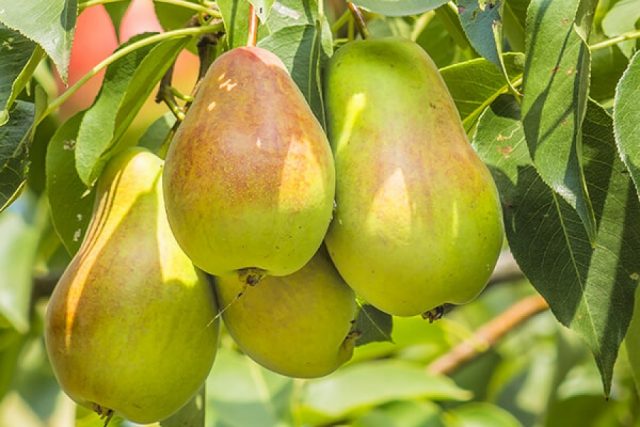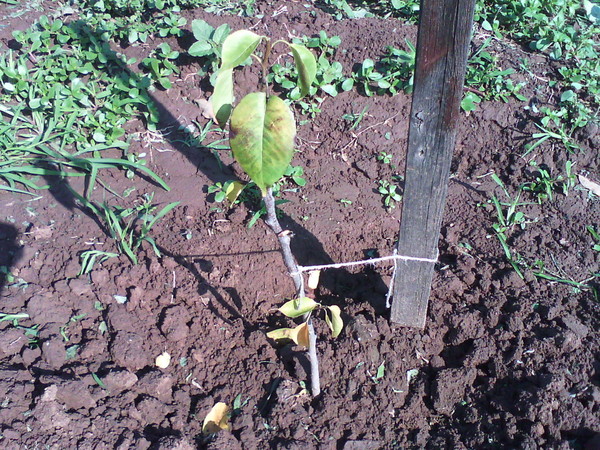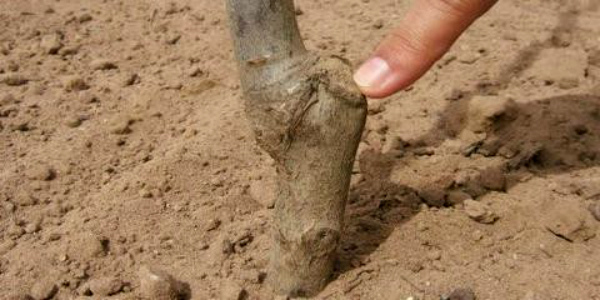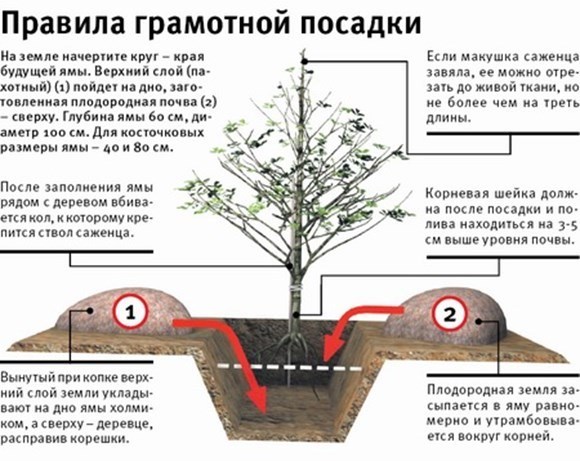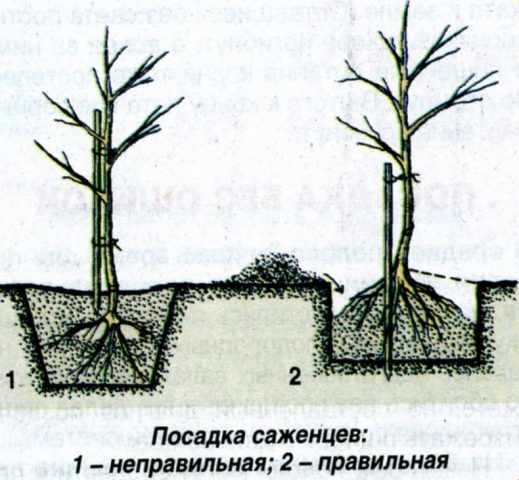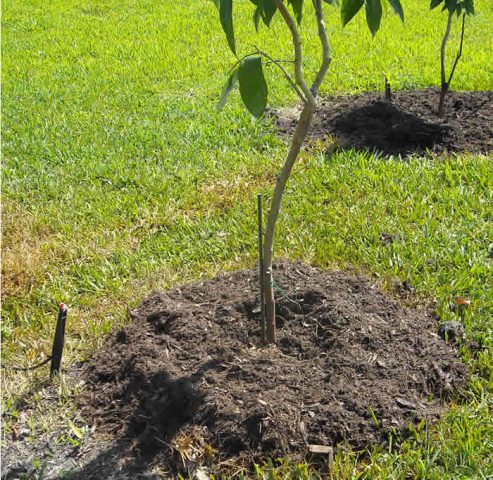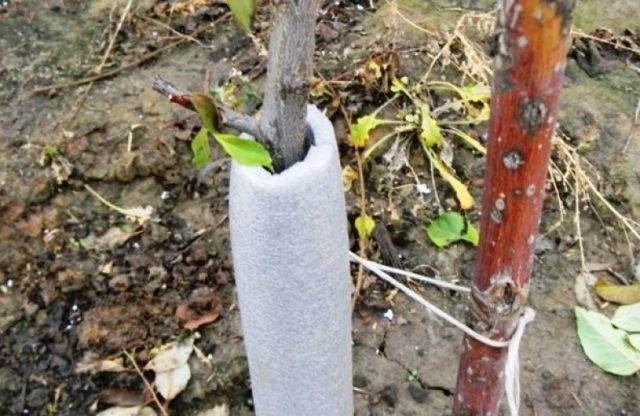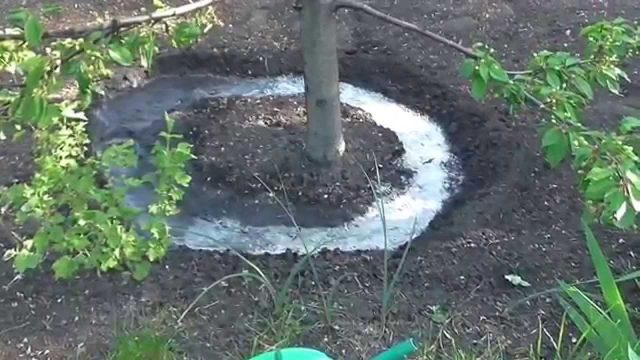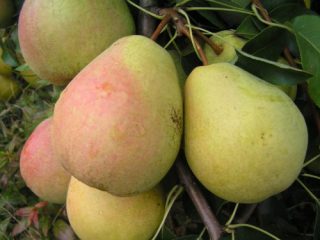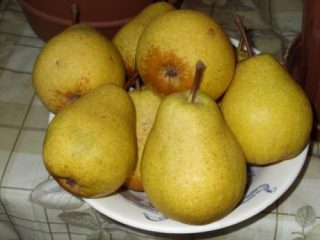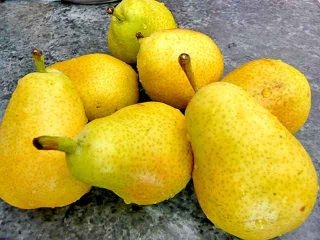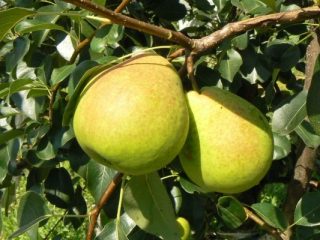Content
Planting pears in autumn recommended by many experts. You just need to choose the right time frame for each region. The first years are given special attention to the pear seedling, because the development and productivity of the tree depends on the initial care.
When is it better to plant a pear: in spring or autumn
Pear planting is carried out both in spring and autumn. It is generally accepted that fruit trees in the northern regions are best planted in April, at the end of the month, when the weather is warm, without the threat of too low indicators during frosts. You can also continue planting until May 9-10, until hot days, when the young tree is stressed and even withers. During the warm season, pear seedlings will get stronger and more easily endure the winter. In the south, planting is often carried out at the end of September, in October. In the middle climatic zone, pears can also be planted in early autumn.
What autumn month can pears be planted
Begin planting pears in the fall from the first days of September. For different regions, the duration of the season for the movement of young pear trees differs depending on the time of the onset of stable low temperatures. The seedling will need 3-4 weeks of relatively warm weather to take root. Over the next 20-30 days, the tree will be able to acclimatize and prepare for a dormant period.
The approximate last dates for the possible planting of pears in the fall are called:
- in the southern region, pears can be planted until October 15-20;
- gardeners of the middle climatic zone carry out such work until October 5-7;
- in areas with more severe weather conditions, pears are planted only in September.
How to plant a pear in the fall
Having decided to plant a pear, gardeners calculate every action, because its fertility depends on the successful placement of a tree. A pear after 5 years does not tolerate a transplant, since it takes deep roots.
Choosing the right place
For a pear tree, a site is selected according to the following requirements:
- sunny, spacious place, preferably in the southern side of the estate;
- to the nearest buildings and trees 4-5 m;
- groundwater at a depth below 2 m;
- in the middle zone of the country, protection from the north wind is important, especially if there are frosts below 28 ° C;
- you cannot plant a pear in the shade of tall ornamental trees, since it takes a lot of sunlight to ripen the fruit;
- for cross-pollination, which contributes to high yields, it is necessary to plant other pears at 5-30 m.
But other gardeners argue that mountain ash easily "shares" its diseases with a pear.
Landing site preparation
For the strong roots of the tree, loamy and sandy loamy moisture-absorbing, loose and fertile soil with an acidity of pH 5-6.5 is suitable. On sandy loam, clay is added to the pit; on heavy clay soils, more sand is added to make it friable. Peat bogs are not suitable for pears.20-30 days before planting, a plot of 1.5x1.5 m is dug up, cleaned of weeds and old tree roots.
A pit is prepared in advance by introducing a substrate with fertilizers so that the soil has time to settle:
- depth 70-90 cm;
- diameter 70-80 cm.
For the substrate, they store:
- 2 parts top layer garden soil;
- 1 part peat;
- 1 part of humus;
- clay or sand as needed;
- 150-200 g superphosphate;
- 60-80 g of potassium sulfate;
- or 200 g of complex fertilizer.
In heavy clay soil, a hole is dug deeper, up to 120 cm, and a 15-20 cm drainage layer is laid. If the acidity of the site is below pH 5, the substrate is alkalized 20-30 days before planting the pear by pouring a bucket of water into the pit, where 2 glasses of dolomite flour or fluff lime are dissolved. A 1 liter can of wood ash is also added.
Preparation of seedlings
It is important to know that pear seedlings older than 3-5 years old do not take root well and often die. In the southern regions, it is possible to plant a 1-year-old tree, in the middle lane and to the north - strong 2-year-olds, which can still easily adapt to a change of location. It is allowed to plant pears with a closed root system in the fall at the age of 3, in accordance with modern technologies, with the assistance of technology.
Before buying a pear seedling at a local nursery, where only zoned varieties are bred, carefully examine for the following characteristics:
- height from 1.2 to 1.5 m;
- trunk thickness 1-1.5 cm;
- 3-4 well-developed root processes;
- absence of any damage;
- live, firm leaves in the fall or swollen buds in the spring.
A seedling with open roots is soaked for 4-12 hours in a clay mash before planting. The pear in the container is placed in a large container of water, where the earthen lump will soften and the roots will come out of the pot without breaking off.
Rules for planting pear seedlings in the fall
When the substrate has already settled after a 3-5 week stay in the planting pit, 10-15 liters of water are spilled before placing the tree. At this time, a peg is driven in, to which a young pear tree will be attached. Then a dry layer of the remaining substrate is poured in the form of a mound and the roots of the seedling are placed so that the root collar is 4-5 cm above ground level. If a hole is dug on the day of planting, the substrate is carefully trampled down several times so that it does not sag and pull down the graft site, it must remain above the ground surface.
The roots are straightened, then sprinkled with earth, from time to time, as it were, lifting the pear seedling so that all the voids in the hole are well filled. After finishing planting, the soil is compacted and a groove is made along the diameter of the pit, where water will be poured for irrigation. The seedling must be carefully tied to a peg and the trunk circle must be mulched after irrigation with non-acidic peat, humus, and later foliage. Pruning can only be done during spring planting. In the fall, the seedling is left to get used to new conditions and prepare for a dormant period.
Transplanting pears in the fall to a new place
An unpretentious young tree after a year of growth can still be planted in the fall in another, more suitable place. In this case, the pit is prepared in the summer, the substrate is covered with fertilizers. Having chosen a cloudy day in September, they deeply dig in the tree, carefully chop off the long roots. The pear is quickly transferred to a new prepared pit with a dry substrate. The soil is compacted, watered and mulched from above.
The nuances of planting a columnar pear in the fall
Columnar pears are placed densely, after 1.5 m. The trees can withstand low temperatures and are resistant to diseases. Their disadvantage is a short fruitful period, only 10-12 years. The best columnar pears are 1-year-old, quickly take root and develop successfully in the future. Planting is standard, fertilizers must be applied. After compacting the near-trunk circle and watering it, they mulch with peat, compost, humus.
Landing features in different regions
Pears are planted using the standard method in all regions. Only the planting time and pre-winter care differ.
How to plant a pear in the fall in the suburbs
In areas of the climatic zone with average severity winter temperatures, pears are often moved in the spring. Seedlings take root well over the summer. In the fall, planting pears in the Moscow region will be successful if it was carried out from September 10 to October 5. For warm days before constant cold weather, seedlings take root. Before frosts, the trunk circle is insulated with humus, compost, peat or rotten straw, in which small rodents will not start.
How to plant a pear in the fall in the Urals
In harsh conditions, where there are severe frosts in winter, pear planting is carried out until September 20-25, guided by long-term weather forecast. The soil around the trunk is mulched with peat, as well as a thick layer of humus and compost. The trunk is insulated in late autumn with paper or burlap. In winter, they cover it up with snow, which is removed when it warms in April.
These are traces of freezing during winter storage of planting material.
Post-planting care and preparation for winter
30-40 days before the onset of frost after planting in the fall, a young pear takes root and prepares for winter, slowing down all processes in the wood.
Watering and feeding
If, after planting, it does not rain in the fall, the seedling is watered once a week with 10-15 liters of water. Make sure that a funnel does not form near the trunk, level the ground with a rake and apply a layer of mulch. No top dressing is carried out in the fall. After frost, dry compost or humus is poured onto the trunk circle. Nutrients will gradually pass into the soil, provide the roots with the necessary substances in the spring.
Protection against diseases and pests
For the short remaining period of the warm season after planting in the fall, the tree is not threatened by any pathogens and pests. If there is no damage on the stem, the seedling is healthy. You can whitewash the entire tree after planting. Whitewashing in autumn will protect the bark from the contrast of temperature changes and the influence of bright sunlight in late winter and early spring.
Preparation for wintering
When the warmth in autumn decreases, watering is stopped. The trunk of a young tree is protected from mice and hares with fine-mesh special nets, wrapped in newspapers, wrapping rough paper, burlap, old synthetic stockings or matting for insulation. A thicker layer of mulch, up to 20-25 cm, is applied along the perimeter of the trunk circle, adding foliage, spruce branches, sawdust to the lower tier of compost or humus. As soon as the snow falls, the seedling is sprinkled with it, forming a protective snowdrift. During spring warming, the crust of the snowdrift is broken and the snow is thrown away so that the young pear does not get pushed up by the melt water.
Gardening tips
It is worth listening to the observations of experienced gardeners about the cultivation of pears and the peculiarities of planting in the fall.
The planting hole is prepared several months before the tree is moved due to the fact that the freshly dug earth, with any trampling and compaction, still gives a draft. Together with the soil, the seedling sinks into the depths, the root collar turns out to be underground, where putrefactive processes can begin after prolonged rains in the fall and waterlogging, and the tree will die.
A groove 10 cm deep and the same width, made around the pit after planting, will make it possible to water the tree. If you simply pour water on the area of the trunk circle, a funnel will form over time. With a sudden cold snap in the fall, summer residents may forget to cover the circle with soil. In the spring, melt water accumulates in the depression, which can also lead to the death of the tree.
Before wintering, the branches of the tree are carefully bent to the trunk and tied with a soft twine so that strong gusts of wind do not break them. Burlap seals are placed under the twine, the bark will not be injured.
Planting in the fall and growing pears will be successful if you follow a simple rule: buy only zoned varieties. The second similar condition is called the choice of varieties. For areas of the middle belt, planting pears of a late ripening period are not recommended. The fruits will not have time to ripen. Early and medium varieties ripen successfully.
Conclusion
Planting pears in the fall, performed within the recommended time frame, will create good starting conditions for the development of the tree. Be sure to enrich the substrate with fertilizers when planting, which will stimulate the growth of the seedling in the spring. After mulching the trunk circle and carefully covering the young plant for the winter, gardeners in the spring begin further steps to care for the fruit tree.
